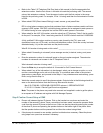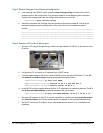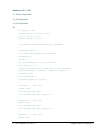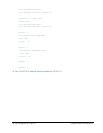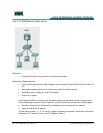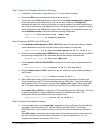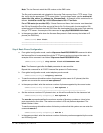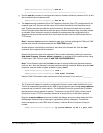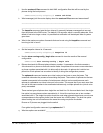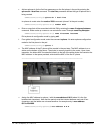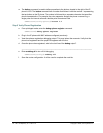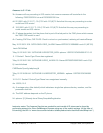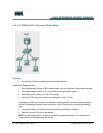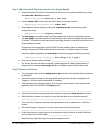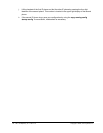
42 - 165 IP Telephony v1.0 Lab 3.1.2 Copyright © 2005, Cisco Systems, Inc.
CMERouterX(config-telephony)# max-dn ?
_________________________________________________________________
g. Use the max-dn command to configure the maximum number of directory numbers to 20, as this
will be sufficient for the classroom lab.
CMERouterX(config-telephony)# max-dn 20
h. The load command updates the Cisco IOS Telephony Services (Cisco ITS) configuration file for
a specific type of IP phone to add the name of the correct firmware file that the phone should
load. This filename also provides the version number for the phone firmware that is in the file.
Cisco IP phones update themselves with new phone firmware whenever they are initially started
or reloaded. When a phone is started or rebooted, the phone reads the configuration file to
determine the name of the firmware file it should load and then looks for that firmware file on a
TFTP server.
Note: A separate load command is needed for each type of phone (although the 7940 and 7960
phones have the same firmware and share the 7960-7940 keyword).
Another keyword used with this command is the name of the firmware file. With the load
command, do not specify the file extension.
Specify the firmware version and associate it with a model of phone by entering the command
load model firmware_filename_without_extension. An example of this command when using
a 7940 and/or 7960 IP phone model is load 7960-7940 P00303020214.
Note: The tar filename used with the load command is entered without the filename extension
(such as .bin). Also, the filename is not case-sensitive with this command. Before using the load
command, view the model numbers available by typing load ?.
CMERouterX(config-telephony)# load ?
CMERouterX(config-telephony)# load model filename
Was the 7960-7940 model number used as part of the command? If not, why not? __________
____________________________________________________________________________
i. The IP phone will attempt to transfer a configuration file that it needs called XmlDefault.cnf.xml.
This file is automatically generated by the CME router through the use of the ip source-address
command and is placed in router memory. The XmlDefault.cnf.xml file contains the IP address
that the phones used to register for service. The phones use the SCCP (Skinny Client Control
Protocol) to do this. SCCP is commonly referred to as simply Skinny or the Skinny protocol.
Enter the ip source-address command to define the address and port number where the Cisco
CallManager Express router is listening for registrations (Skinny messages). This address
should correspond to a valid CME router IP address. Note the X in the command is the pod
number.
CMERouterX(config-telephony)# ip source-address 10.X5.0.1 port 2000



